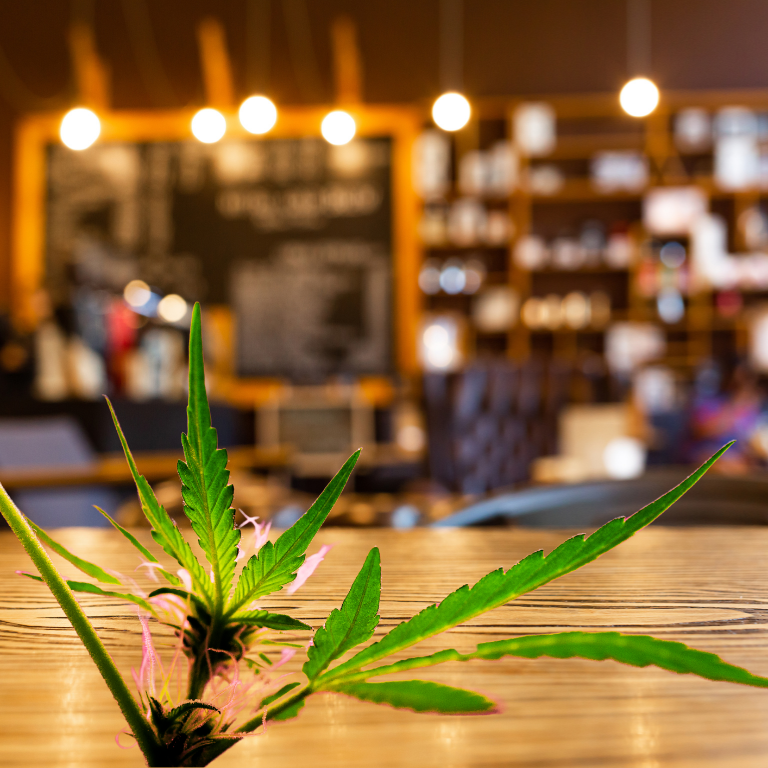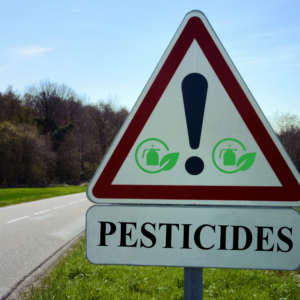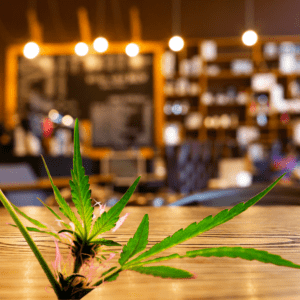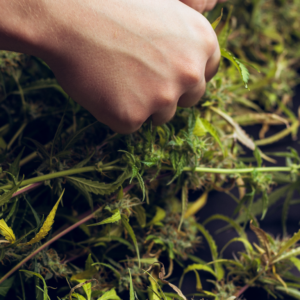Cannabis Industry Insights: Election, Daylight Saving, and More

As the cannabis industry grows, it’s becoming increasingly affected by broader political and societal issues, from elections and regulatory changes to seasonal shifts like daylight saving time. Each of these factors can influence market trends, sales patterns, and regulatory landscapes within the cannabis sector, shaping its future. For investors, business owners, and consumers alike, staying informed on these intersections is essential for making informed decisions.
This article will examine how the upcoming election cycle, changes in daylight saving practices, and other relevant factors are impacting the cannabis industry, providing insights into how these elements play into market dynamics and regulatory expectations.
Election Cycles and the Impact on Cannabis Legislation
Election years have historically had a significant impact on the cannabis industry, particularly at the state level. With each election, more states vote on cannabis legalization measures, while ongoing political discourse at the federal level continues to shape future possibilities for nationwide cannabis reform. For the cannabis sector, the results of these elections often determine market expansion and regulatory landscapes.
The State-Level Push for Legalization
As of now, cannabis is fully legal (both medicinally and recreationally) in nearly half of the U.S. states, with most others permitting medical cannabis use. Each election brings new state-level referendums, where legalization measures are often on the ballot. In recent years, states like New York, Illinois, and New Jersey have joined the ranks of those allowing adult-use cannabis, fueling hopes for additional states to legalize in upcoming election cycles.
In states where legalization is on the ballot, industry stakeholders closely monitor public opinion and the political climate, as these factors can predict new opportunities for cannabis businesses. Legalization often brings a surge in local investment and opens doors for cannabis startups, dispensaries, and cultivation operations, leading to economic growth and job creation. On the consumer side, more states with legal cannabis access means more accessibility and variety in products, fostering innovation and diversity in product offerings.
Federal Cannabis Reform and the Rescheduling Debate
The upcoming election also brings attention to the federal status of cannabis. Currently classified as a Schedule I substance under the Controlled Substances Act, cannabis remains federally illegal. However, both political parties have expressed interest in changing this, with bipartisan support growing around rescheduling cannabis to Schedule III. A move to Schedule III would reduce barriers for cannabis research, allow medical use under FDA guidelines, and provide relief from the heavy tax burdens that currently weigh on cannabis businesses.
With candidates discussing their stances on federal cannabis reform, including rescheduling and the legalization of medical cannabis, the cannabis industry is poised for potential transformation. Federal reform could also pave the way for financial institutions to work with cannabis companies, enabling easier access to banking services and broader investment opportunities.
Daylight Saving Time and Seasonal Shifts: Effects on Cannabis Sales
Daylight saving time (DST) adjustments are not only a topic of general societal debate but also a factor that affects business sectors, including cannabis. As clocks shift, people’s daily routines and behaviors often change, which in turn influences shopping patterns, product preferences, and even sales peaks in the cannabis market.
The Impact of Daylight Saving on Consumer Behavior
As daylight hours change, consumer behavior shifts as well. The transition into shorter days during the fall often leads to increased demand for cannabis products that aid with sleep, stress, and mood regulation. Cannabis companies have reported a seasonal trend where consumers gravitate toward calming products during darker, colder months. Products rich in CBD, as well as those formulated to address insomnia or anxiety, tend to see increased sales.
In regions with legalized recreational cannabis, dispensaries may adapt to DST by adjusting their business hours to accommodate shifts in customer routines. For example, many consumers report changing their shopping habits after daylight saving ends, preferring to shop earlier in the day. Retailers can meet this demand by extending morning or midday hours, thereby boosting sales and catering to consumer preferences.
Growing and Harvesting Considerations for Cultivators
For cannabis cultivators, daylight saving time and seasonal shifts also play a significant role in operations, particularly for outdoor and greenhouse grows. Outdoor cultivators rely heavily on natural light cycles, and the shortened daylight hours of fall and winter can slow growth cycles, delaying harvests and impacting yields. Indoor cultivators, while less impacted by natural light, may still need to adjust artificial lighting schedules to account for shorter days, which can affect electricity costs and overall yield.
Cannabis growers in temperate climates often need to invest in supplemental lighting to offset the reduced daylight hours and maintain consistent growth cycles. As daylight saving ends, the cost of electricity and heating for indoor grows typically increases, impacting overall production costs. Smart lighting solutions and automated climate control can help mitigate these issues, ensuring that plants receive adequate light and warmth regardless of external conditions.
Trends and Challenges for Cannabis Businesses in 2024 and Beyond
As the cannabis industry evolves, several trends and challenges continue to shape its future. These factors, coupled with the impact of elections, daylight saving, and societal attitudes toward cannabis, contribute to the complexities that cannabis businesses must navigate.
The Push for Sustainable Practices
Sustainability is a growing concern for consumers, and the cannabis industry has taken note. Given the high energy requirements of cannabis cultivation, particularly indoor grows, companies are seeking ways to reduce their carbon footprint. From LED lighting to water recycling systems, sustainable cultivation practices are increasingly becoming standard as businesses work to reduce environmental impact and cut costs.
In addition to cultivation, packaging practices are also under scrutiny. With many states requiring child-proof, single-use packaging, cannabis companies are exploring recyclable and compostable materials to align with consumer demand for eco-friendly products. As more businesses adopt sustainable practices, companies that fail to prioritize environmental responsibility may face reputational risks and lose market share.
Innovation in Cannabis Product Offerings
The diversity of cannabis products on the market has exploded, with companies introducing innovative forms to appeal to both seasoned and new consumers. Beyond traditional flower and edibles, consumers can now choose from an array of options, including cannabis-infused beverages, wellness tinctures, and topical solutions. This diversification not only attracts a broader consumer base but also helps cannabis businesses differentiate themselves in a crowded market.
Functional cannabis products—those formulated to achieve specific effects such as relaxation, focus, or energy—are also trending. Microdosing, where consumers take small, controlled doses to experience mild effects without full intoxication, is gaining popularity, particularly among wellness-oriented consumers. The push toward products tailored for specific outcomes continues to drive research and development efforts in the cannabis industry.
Marketing and Regulatory Challenges
Despite progress in legalization, the cannabis industry still faces marketing restrictions and regulatory challenges that complicate business operations. Advertising cannabis remains tightly controlled, with many platforms like Google and Facebook prohibiting cannabis-related ads, making it difficult for companies to reach a wider audience.
Additionally, regulatory compliance varies greatly from state to state, requiring companies to adapt their practices for each market in which they operate. From packaging and labeling to product testing, regulatory compliance can add significant costs and create operational complexities. Companies that succeed are those that invest in compliance infrastructure and stay updated on changing regulations, which can vary significantly between jurisdictions.
Public Opinion and Societal Shifts
Public opinion surrounding cannabis has evolved significantly over the past few decades, and this shift plays an influential role in legislative efforts and market trends. More Americans than ever support cannabis legalization, and as stigma continues to decrease, more people are open to trying cannabis products for recreational or medicinal purposes.
Societal Acceptance and Increased Accessibility
The growing acceptance of cannabis is driving both product innovation and the expansion of retail dispensaries. For example, some states are experimenting with social consumption lounges where adults can use cannabis in a controlled, social setting. These venues help normalize cannabis use and offer consumers an alternative to at-home consumption.
With growing societal acceptance, cannabis is also finding its way into new demographics, particularly older adults. Many older consumers are turning to cannabis as an alternative for managing chronic pain, sleep disorders, and other health issues. This demographic shift is prompting companies to develop products that cater to the unique needs of aging consumers, such as low-dose edibles and topical pain relievers.
The Role of Health and Wellness Trends
The health and wellness movement has intersected with the cannabis industry, contributing to the popularity of CBD and wellness-focused cannabis products. Many consumers are drawn to cannabis as a natural alternative to traditional pharmaceuticals, particularly for managing stress, anxiety, and pain.
As wellness trends continue to influence consumer behavior, cannabis companies are focusing on transparency and quality to build trust. Many brands now provide detailed product information, including lab results and ingredient sourcing, to assure consumers of product safety and efficacy. This commitment to quality and transparency is expected to become even more important as consumers increasingly prioritize health and wellness.
The Future of Cannabis
The cannabis industry’s future will be shaped by a blend of political, societal, and technological factors. From potential federal reform and evolving consumer preferences to sustainability and product innovation, cannabis companies face both opportunities and challenges as they navigate a rapidly changing landscape.
For those in the cannabis industry, understanding the broader factors affecting their market—such as election outcomes, seasonal changes, and societal trends—can provide a strategic advantage. With a proactive approach to these shifts, cannabis companies can position themselves for success in an industry that shows no signs of slowing down.
As the cannabis landscape continues to evolve, businesses that remain adaptable, innovative, and responsive to consumer needs will lead the way, setting the stage for a more dynamic, accessible, and responsible cannabis industry.











